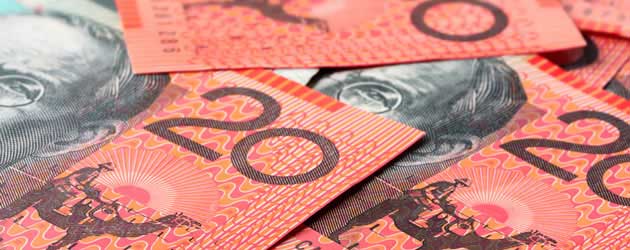
The Pound to Australian Dollar exchange rate (GBP/AUD) increased by a slender 0.1 cents earlier this morning to 1.4985 as it was announced that the AiG Performance of Manufacturing Index tumbled to a 4-year low of 36.6 in April. The PMI printed relatively low, at 44.4, in March and the latest result took a giant leap in the wrong direction from the 50.0 level that separates growth from contraction. It is thought that the strong value of the Australian Dollar is damaging Australian the competitiveness of Australian Manufacturing exports.
Innes Willox form AiG mirrored the concerns of many business owners in Australia, who have been voicing their concerns regarding the overvalued ‘Aussie’ for some time:
“The sharp drop in Manufacturing Production, Employment, and New Orders in April, along with the continued erosion of exports, is deeply concerning. The strength of the Australian Dollar is a major burden on domestic producers.”
Indeed, the Australian Dollar is currently over 6 cents higher against the Pound than at the start of the year, and over 120 cents stronger than it was in October 2008.
The Reserve Bank of Australia have cut interest rates by 175 basis points since late 2011, partly in an attempt to halt the ‘Aussie’ Dollar’s bullish run. However, the RBA stated in March that although AUD is overvalued by around 5%, the negative implications are not severe enough to warrant large-scale intervention:
“The situation in Australia is not considered comparable to circumstance which led Switzerland to intervene on foreign exchange markets”.
In September of 2011 the Swiss National Bank pledged to buy “unlimited quantities” of foreign currencies in order to drive down the Swiss Franc’s exchange rate to 1.20 vs. the Euro. The move came as jittery investors, searching for a safe haven from the Eurozone debt crisis, were ploughing vast sums of money into the Swiss economy. The mass influx of cash sent the Swiss Franc soaring, making Swiss products extremely expensive both in terms of exports and domestically – some Swiss nationals even resorted to trips across the border to Germany to do their shopping.
With an intervention of this proportion explicitly ruled out by the RBA, traders know that the strength of the Australian Dollar, is not a direct threat to the value of the Australian Dollar. And for this reason markets have reacted fairly nonchalantly to economic frailties related to the domestic currency.
At this moment in time, investors are focused on Central Bank intervention from other parts of the world: namely Europe and America.
With the Eurozone Unemployment crisis ballooning to a fresh record-high of 12.1% and CPI inflation sliding to 1.2%, it appears very likely that the European Central Bank could reduce the benchmark interest from 0.75% to 0.50% later this week. There is even talk of additional unconventional monetary easing measures being employed and a relaxation of fiscal consolidation targets for struggling member states. All of these things would be considered positive for global growth prospects, and in turn enhance risk sentiment, benefitting the Australian Dollar.
The Federal Reserve is also due to release a statement this week; the interest rate is widely forecast to remain at the record low 0.25%, but Chairman Ben Bernanke is expected to signal a continuation, or even an expansion, of the Fed’s risk-boosting $85 billion a month asset purchasing programme. Last time out the Fed struck a slightly less dovish tone, suggesting that it was considering winding down the QE3 programme before the end of the year. However, recent economic indicators since then, most notably the disastrous US Non-farm Payroll figures, have poured cold water on Fed hopes of an early exit strategy.
Under the scenario of enhanced Central Bank stimulus from the ECB and Federal Reserve, the high-yield Australian Dollar would stand to benefit significantly from improved risk appetite, and GBP/AUD could begin to slide back towards 1.4800.

Comments are closed.